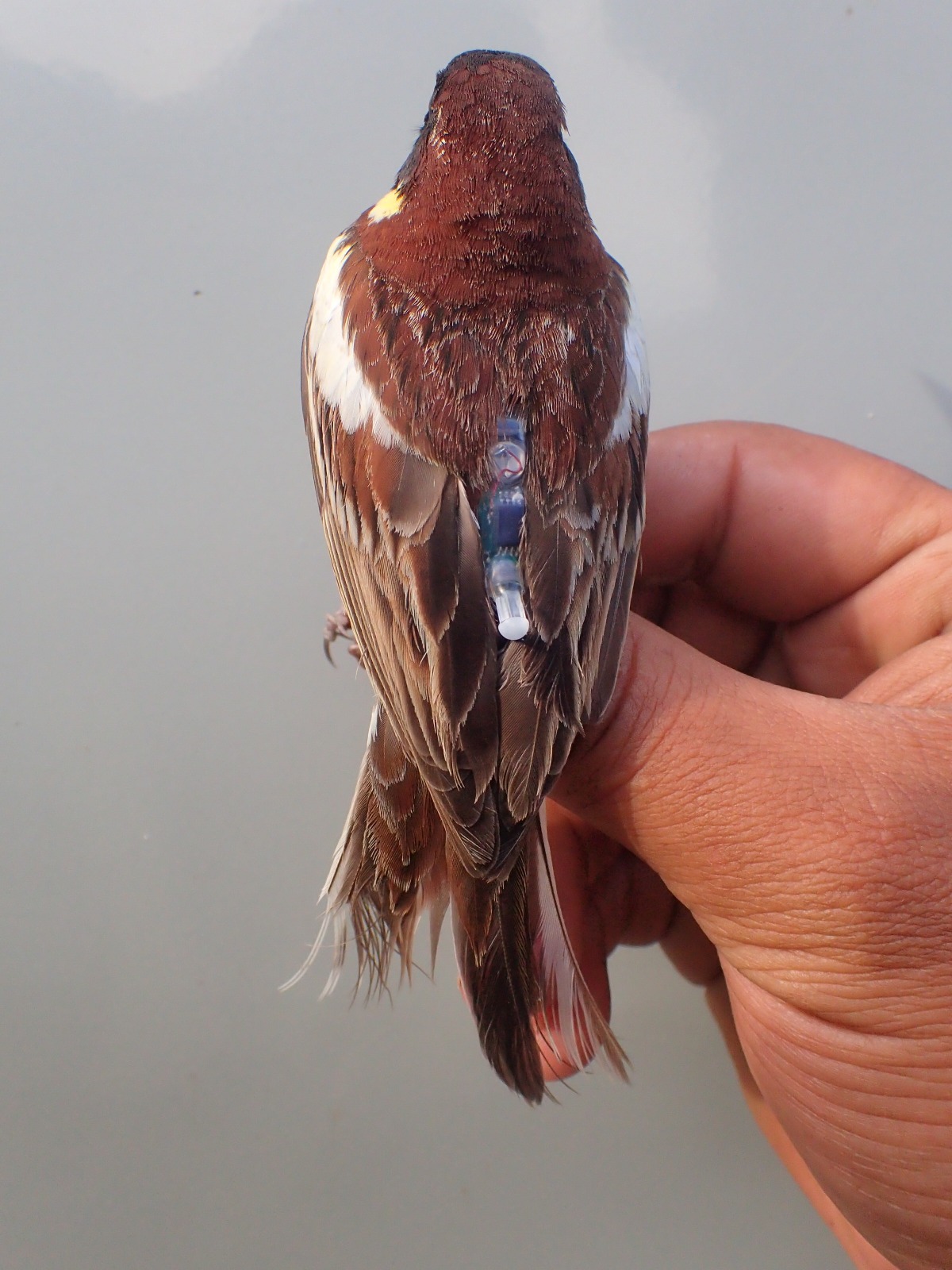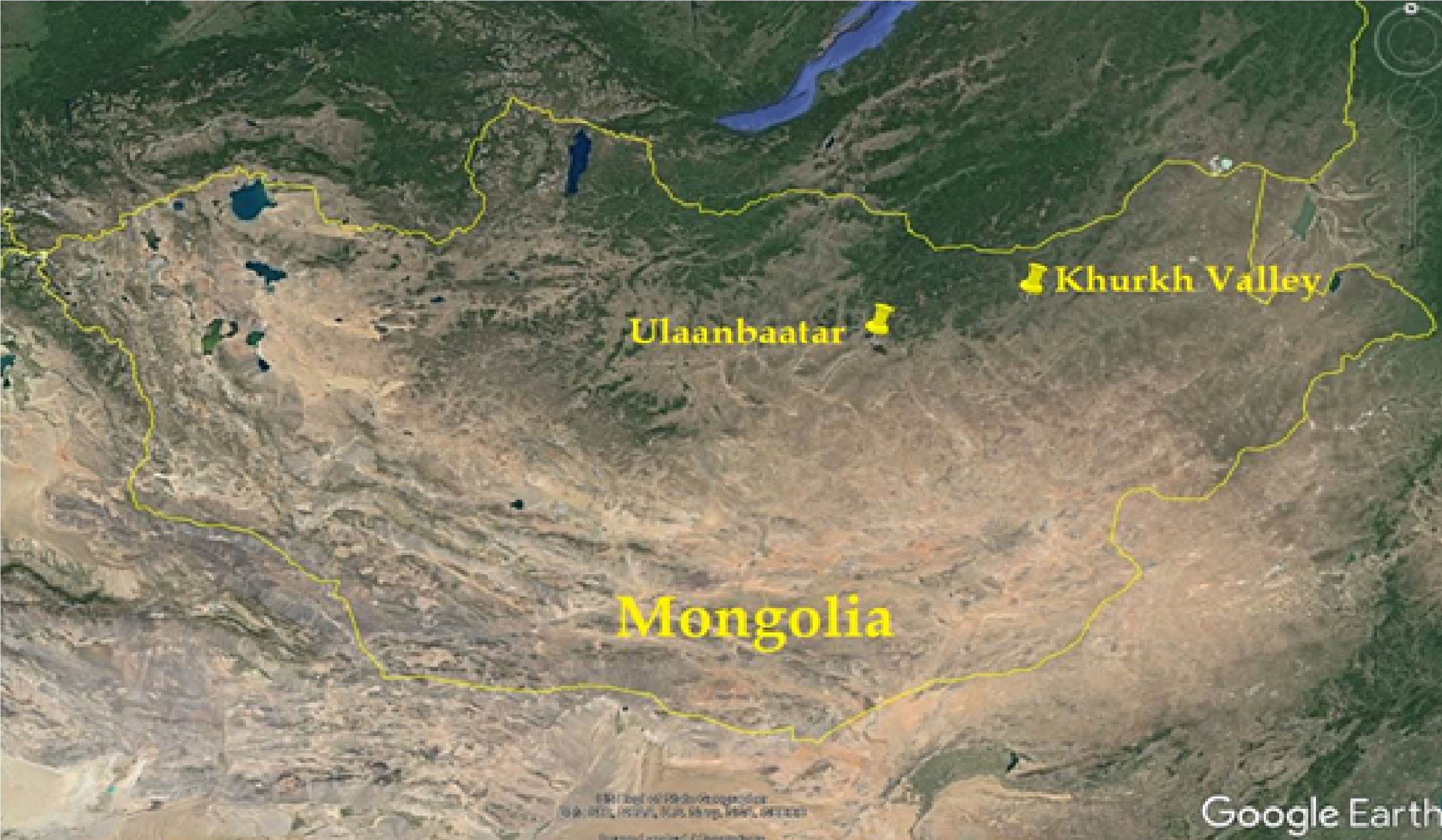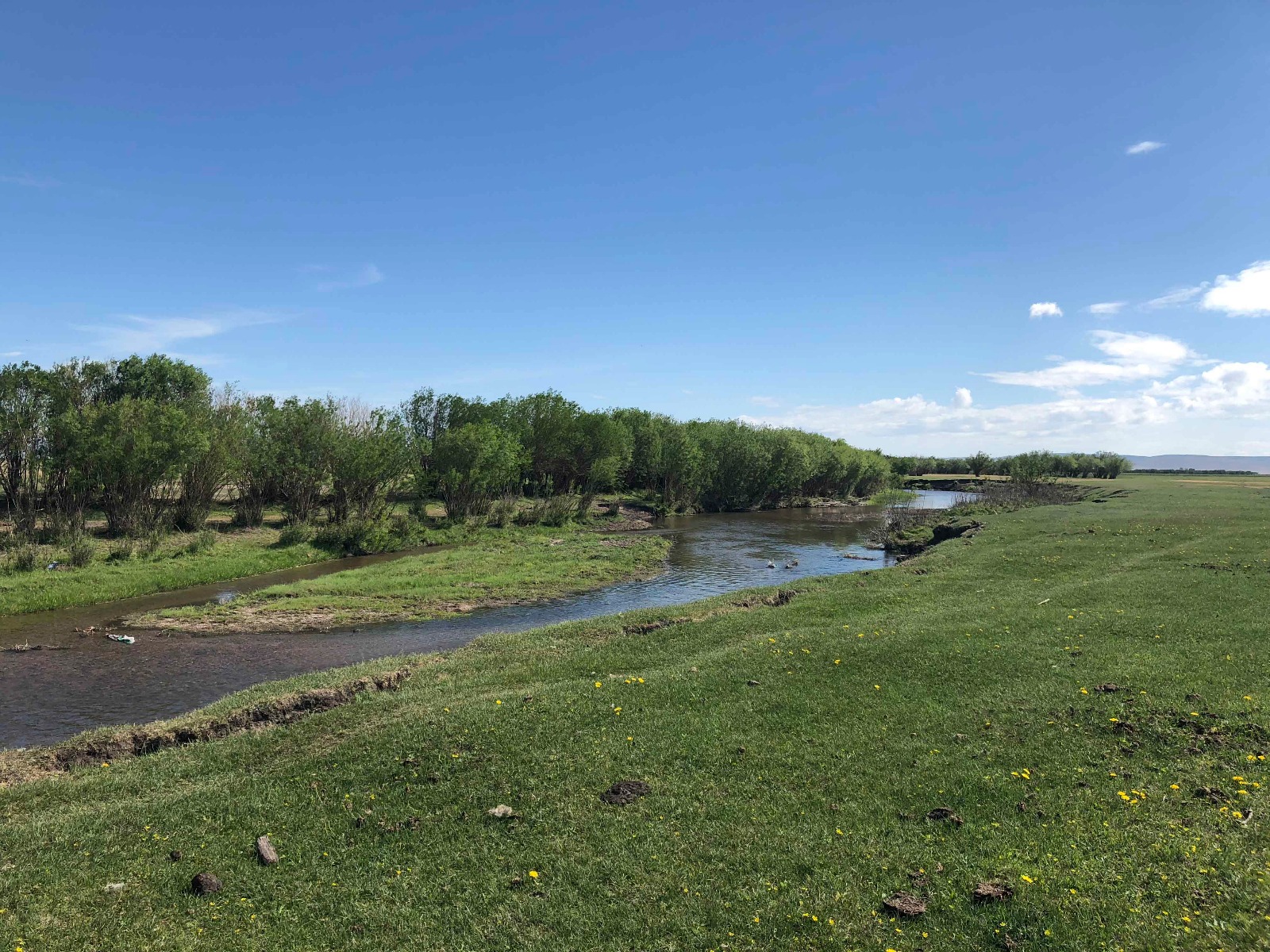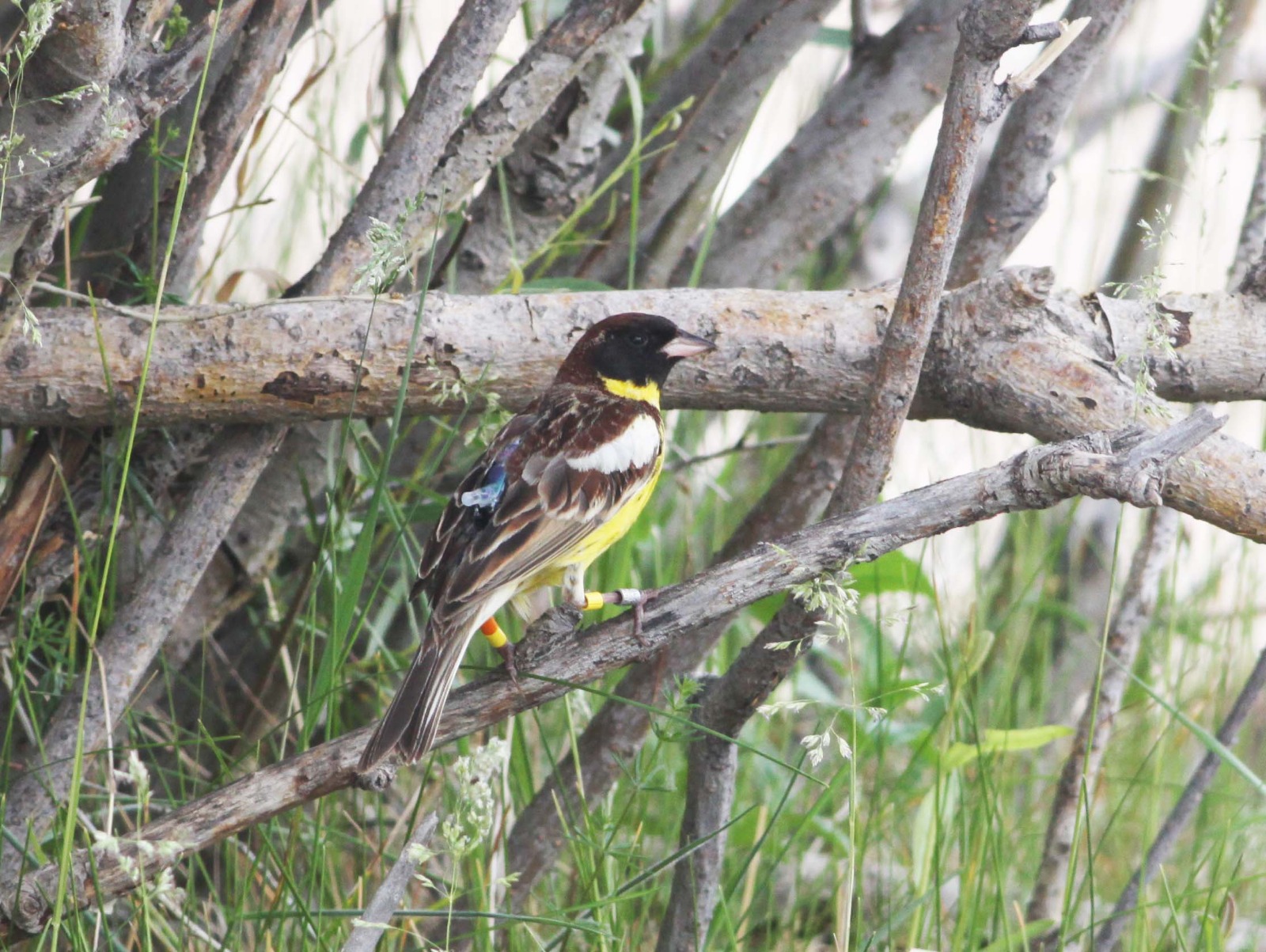黃胸鵐在全球的分佈曾經十分廣泛,牠們在整個古北界均有繁殖。但由於被過度捕殺,數目銳減。國際自然保護聯盟瀕危物種紅色名錄於2017年把黃胸鵐列為極危。蒙古是少數仍有黃胸鵐繁殖的國家,但過去極少詳細研究,現有資料已經過時,而當地研究這物種的資源亦相當匱乏。
本會與蒙古野生動物研究與保育中心的專家於6月6日至16日在蒙古Khurkh Valley 進行了一次黃胸鵐的繁殖調查。這次調查旨在評估當地黃胸鵐的數量和繁殖地生境,並在黃胸鵐身上安置跟蹤器,了解更多黃胸鵐的遷徙狀況。本次研究團隊在 Khurkh Valley成功尋獲最少二十隻鳴唱的雄鳥。因此估計在這有限的棲息地中,可能有多達二十對黃胸鵐在繁殖。在調查點所見對鳥類及自然生境的威脅屬於輕微。我們在10隻雄性的黃胸鵐身上安裝了地理定位追蹤器,另外對五隻雌鳥進行環誌。
本會十分感激Yann Muzika 在本次研究中提供的財務協助及陳承彥先生提供地理定位追蹤器。同時亦有賴Wieland Heim 提供生境調查表格。

蒙古Khurkh Valley的地理位置 © Google Earth
Location of Khurkh Valley, Khentii Province, Mongolia. Copyright of Google Earth.

黃胸鵐潛在繁殖地的照片 ©余日東
Site photo of the potential Yellow-breasted Bunting breeding site 1. Photo by Yat-tung Yu.

一個地理定位追蹤器已安置在一隻雄性黃胸鵐身上,該鳥亦同時繫上腳環 ©余日東
A geolocator is fitted on a male Yellow-breasted Bunting, which was also put on colour and metal rings. Photo by Yat-tung Yu.

本次研究團隊:蒙古野生生物科學及保育中心 Batnunkh Davaasuren (左一)及Jugdernamjil Nergui (右一)
The research team, Mr Batnunkh Davaasuren (on left) and Mr Jugdernamjil Nergui (on right)

Survey of breeding range and inception of tracking Critically Endangered Yellow-breasted Bunting Emeriza aurola in Mongolia
Yellow-breasted Bunting Emberiza auerola (YBB) once had a very large distribution globally, which breeds across the whole northern Palearctic. Yet, due to over-exploitation, the population dropped drastically. It was listed as Critically Endangered in IUCN Red List in 2017. Mongolia is one of the few countries still having breeding Yellow-breasted Buntings, but it was not well known and studied in Mongolia and many existing information of the species has not been updated recently. Local resources to study this species is limited.
We have conducted a breeding survey of Yellow-breasted Bunting in Khurkh Valley, Mongolia, from 7 to 16 June 2018, jointly with a team of researchers from the Wildlife Science and Conservation Center of Mongolia (WSCC). We aim to assess the abundance and habitat of the breeding YBB there and putting on small tracking devices, i.e. geolocator, on the birds in order to understand more about their migration behaviour. The team has successfully found at least 20 singing male Yellow-breasted Buntings in the Khurkh Valley and it is likely that the breeding population might well be 20 pairs in this restricted habitat. Threats to birds and the habitats are not very high, nor immediate. Ten geolocators were placed on the males, and an extra 5 females were also put on with colour bands.
We are very grateful to Yann Muzika supporting this survey. Thanks must also go to Simba Chan for all helps of organising this survey, and Wieland Heim to shares the standardised habitat form.




